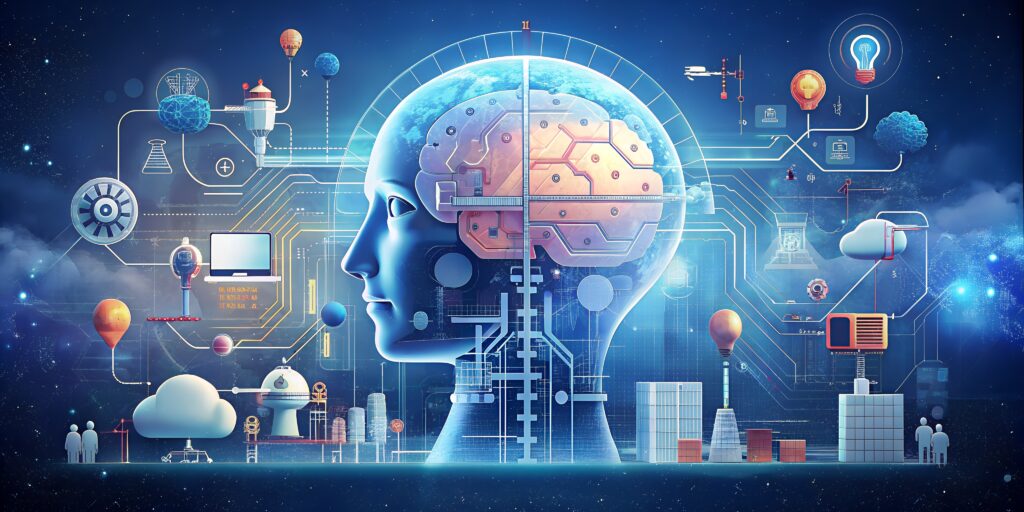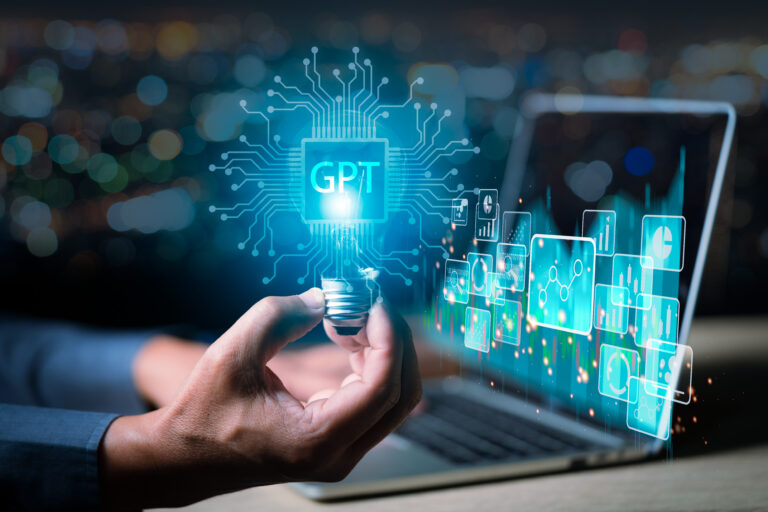
What Is a Large Language Model (LLM)?
Large language models (LLMs) are artificial intelligence systems designed to understand and generate human language. They are built using deep learning techniques, typically involving billions of parameters. These models learn from vast amounts of text data, enabling them to perform various language-related tasks such as translation, summarization, and question answering. The size and complexity of LLMs make them resource-intensive to train and deploy.
LLMs have seen a surge in popularity due to their ability to generate human-like text that is contextually relevant and coherent. They can be fine-tuned for specific applications, making them versatile tools in fields ranging from content creation to customer support. However, their performance heavily depends on the quality and diversity of their training data, and they suffer from the problem of hallucination, in which models provide confident, plausible responses, which contain wrong information. This raises the need for more sophisticated ways to determine what data is considered in an LLM’s responses, a problem that is addressed by RAG.
What Is Retrieval Augmented Generation (RAG)?
Retrieval augmented generation (RAG) is a method that combines the strengths of traditional retrieval methods and modern generative AI to improve the performance of language models. Unlike traditional LLMs that rely solely on pre-trained data, RAG systems can retrieve relevant information from external sources in real-time and add them to the context of the LLM model. This approach allows the model to access up-to-date and contextually relevant information, enhancing its ability to generate accurate and reliable responses.
In RAG, the generation process is enhanced by retrieving pertinent documents or data points from a large corpus. This retrieval step ensures that the context provided to the language model is not only accurate but also highly relevant to the query at hand. By marrying retrieval with generation, RAG systems offer a context-aware solution for complex language tasks.
Two examples of widely known RAG systems are the Bing search engine and Google AI Overviews. Both of these systems use RAG to collect the most relevant sources from the Internet and based on those sources, write a relevant LLM response to user queries.
Benefits of RAG for LLMs
RAG systems enhance the capabilities of large language models by incorporating real-time information retrieval. This addresses the problem of hallucinations, allowing LLMs to produce more accurate and contextually relevant responses. It also helps overcome the limitations of static, pre-trained models.
The integration of retrieval mechanisms ensures that the generated content is not only coherent but also up-to-date, supporting use cases such as writing LLM responses based on the latest world news, or any content created after the LLM was originally trained.
RAG systems can also handle niche queries by accessing specialized databases, offering tailored solutions across various domains. This makes them particularly valuable in fields requiring detailed, precise, and current information, such as legal research, medical diagnostics, and financial analysis.
RAG vs. Fine-Tuning
Fine-tuning and retrieval augmented generation (RAG) are two approaches used to enhance the performance of large language models (LLMs), but they operate on fundamentally different principles.
Fine-tuning involves training an already pre-trained model on a smaller, task-specific dataset. This additional training allows the model to adapt to the nuances of the specific application, improving its accuracy and relevance for that particular task. Fine-tuning is effective for scenarios where the task-specific data is relatively static and does not require frequent updates. It can be resource-intensive, but modern Parameter-Efficient Fine Tuning (PEFT) techniques can significantly reduce the computational load.
RAG combines retrieval with generation to dynamically enhance LLM responses. Instead of relying on pre-trained knowledge, RAG systems retrieve relevant, up-to-date information from external sources. This retrieval step ensures that the model has access to the latest information, making it more adaptable and accurate, especially in rapidly changing fields. While RAG does not require retraining the model, it makes LLM inference more computationally intensive, because of the need to search and retrieve data for each user request.
The Workflow of a RAG System
1. Query Processing
Query processing is the first step in the RAG workflow, where the system interprets the user’s input. This involves tokenizing the query, removing stop words, and identifying key semantic elements. Natural language processing techniques are employed to ensure that the system accurately understands the user’s intent. This step is crucial as it sets the stage for accurate information retrieval and response generation.
Accurate query processing ensures that the subsequent stages of retrieval and generation can operate effectively. Misinterpretation at this stage can lead to irrelevant or incorrect information retrieval, which would degrade the quality of the final output. Therefore, algorithms and techniques are deployed, often involving pre-trained models and fine-tuning, to achieve high accuracy in query understanding.
2. Embedding Model
The embedding model plays a critical role in transforming the processed query into a high-dimensional vector representation. This vector captures the semantic essence of the query, enabling effective matching with relevant documents in the vector database. Embedding models like Word2Vec or BERT can encode a variety of linguistic subtleties, improving the accuracy of the retrieval process.
Using high-dimensional vectors allows the system to measure the similarity between the query and documents more precisely. This precision is essential for retrieving contextually relevant information, especially in complex queries. The embedding model ensures that the nuances of human language are preserved, enabling more accurate and relevant data retrieval.
3. Vector Database Retrieval
In the vector database retrieval step, the high-dimensional vector representation of the query is used to search through a database of pre-encoded documents. The goal is to find documents that are semantically similar to the query vector, providing relevant context for the language model. Technologies like Faiss or Annoy are often employed to perform efficient and scalable vector searches.
The retrieved documents allow the LLM to generate accurate and relevant responses. The effectiveness of this step directly impacts the quality of the final output. Ensuring quick and accurate retrieval is essential for maintaining the system’s overall efficiency and reliability.
4. Retrieved Context
Once relevant documents are retrieved, they are added to the context of the LLM to better inform responses. This step provides the necessary information for accurate response generation. The retrieved context includes pertinent facts, figures, and details directly related to the query, enhancing the model’s ability to generate precise and relevant answers.
Incorporating retrieved context ensures that the language model operates with the most up-to-date and relevant information. This significantly improves the accuracy and reliability of the generated responses.
5. LLM Response Generation
The LLM response generation stage utilizes the retrieved context to generate a coherent and accurate answer to the query. Here, the language model synthesizes information from the retrieved documents with its pre-trained knowledge to produce a well-informed response. RAG can be integrated with any LLM, and modern LLMs like GPT-4 and Meta LLaMA provide built-in features to make this integration easier.
It is important to ensure the final response is accurate and reliable for users. This requires continuous monitoring and implementation of user feedback mechanisms. An iterative process of refining and reviewing responses ensures that the final output is of high quality and makes it possible to troubleshoot and improve RAG systems over time.
Applications of LLM with RAG
Information Retrieval and Question Answering
By combining retrieval with generation, RAG LLM systems can provide precise and contextually accurate answers to user queries. This is particularly useful in complex domains such as legal research or medical diagnostics, where accurate information retrieval is critical.
The ability to access real-time data and incorporate it into responses makes RAG systems superior to traditional static models. This capability ensures that the information provided is up-to-date and relevant, significantly improving the accuracy and reliability of question-answering systems.
Personalized Content Generation
RAG systems excel in personalized content generation, leveraging user data and preferences to tailor content to individual needs. By retrieving relevant information and generating content that aligns with user interests, these systems can create highly personalized experiences. This is valuable in applications ranging from personalized news feeds to customized marketing materials.
The integration of real-time data retrieval ensures that the generated content is current and relevant, enhancing user engagement. The ability to produce targeted and personalized content makes RAG systems valuable assets in areas such as digital marketing, content creation, and personalized education.
Enhanced Customer Support Systems
In customer support, RAG systems can provide instant, accurate responses to customer queries, significantly improving service quality. By retrieving relevant information from extensive knowledge bases, these systems can handle a wide range of queries with high accuracy.
This reduces the need for human intervention, lowering operational costs and increasing efficiency. The ability to provide quick and reliable answers enhances customer satisfaction and builds trust in the support system.
Research and Knowledge Extraction
RAG systems are powerful tools for research and knowledge extraction, capable of sifting through vast data sets to find relevant information. This is particularly useful in academic and scientific research, where accessing and summarizing large volumes of data is often required. RAG systems can retrieve pertinent documents and generate concise summaries, significantly accelerating the research process.
The ability to provide precise and contextually accurate information makes RAG systems valuable in fields requiring extensive data analysis. They can support researchers by providing quick access to relevant literature, enhancing the efficiency and effectiveness of the research process.
How to Integrate RAG with Large Language Models
Here is the general process involved in integrating retrieval-augmented generation (RAG) with large language models (LLMs).
Preparing Your Dataset
The initial step in implementing RAG is to prepare the dataset, which is essential for training and fine-tuning the model. A well-prepared dataset ensures that the RAG system can generate precise and contextually relevant responses.
- Collecting relevant documents: Begin by identifying and gathering documents that contain the information you want the RAG system to use during question answering.
- Preprocessing unstructured data: Clean and preprocess the text data to remove any noise and ensure consistency. This step is vital for maintaining data quality and improving the model’s performance.
- Structuring the dataset: Organize the dataset to align with the input and output requirements of the RAG system. Typically, this involves structuring the database to ensure the system can pair input queries or prompts with their corresponding answers and source documents.
- Convert documents to vector format: Representing the documents in vector format enhances retrieval accuracy and efficiency. Vector representations capture the semantic meaning of the documents, enabling the retrieval component to identify relevant documents.
Integrating RAG into Your LLM Setup
Once the dataset is prepared, the next step is to integrate RAG into the LLM setup:
- Choosing a suitable LLM architecture: Select an LLM that meets your requirements. Prefer modern LLMs that provide the required language capabilities and easily integrate with RAG systems.
- Optional: Fine-tuning the LLM: When using RAG for highly specific use cases, it can be useful to fine-tune the LLM using part of the RAG dataset. This ensures that the model is well-adapted to the specific domain and task.
- Including the retrieval component: Integrate the retrieval component into the pipeline to enable document retrieval.
- Configuring probability estimation: Adjust probability estimation parameters to control the balance between retrieval and generation components. This configuration ensures that the generated answers are informed by both the input query and the retrieved documents, enhancing their relevance and accuracy.
- Testing LLM model and configuration: Most LLMs provide several model variants, each with different capabilities, and runtime parameters such as “temperature”, which controls the creativity of the response. Use the model version and configuration that provide the best performance for the use case at hand. It is important to test different model variants and parameters to see their performance when RAG is already in place.
AI Testing & Validation with Kolena
Kolena is an AI/ML testing & validation platform that solves one of AI’s biggest problems: the lack of trust in model effectiveness. The use cases for AI are enormous, but AI lacks trust from both builders and the public. It is our responsibility to build that trust with full transparency and explainability of ML model performance, not just from a high-level aggregate ‘accuracy’ number, but from rigorous testing and evaluation at scenario levels.
With Kolena, machine learning engineers and data scientists can uncover hidden machine learning model behaviors, easily identify gaps in the test data coverage, and truly learn where and why a model is underperforming, all in minutes not weeks. Kolena’s AI / ML model testing and validation solution helps developers build safe, reliable, and fair systems by allowing companies to instantly stitch together razor-sharp test cases from their data sets, enabling them to scrutinize AI/ML models in the precise scenarios those models will be unleashed upon the real world. Kolena platform transforms the current nature of AI development from experimental into an engineering discipline that can be trusted and automated.



